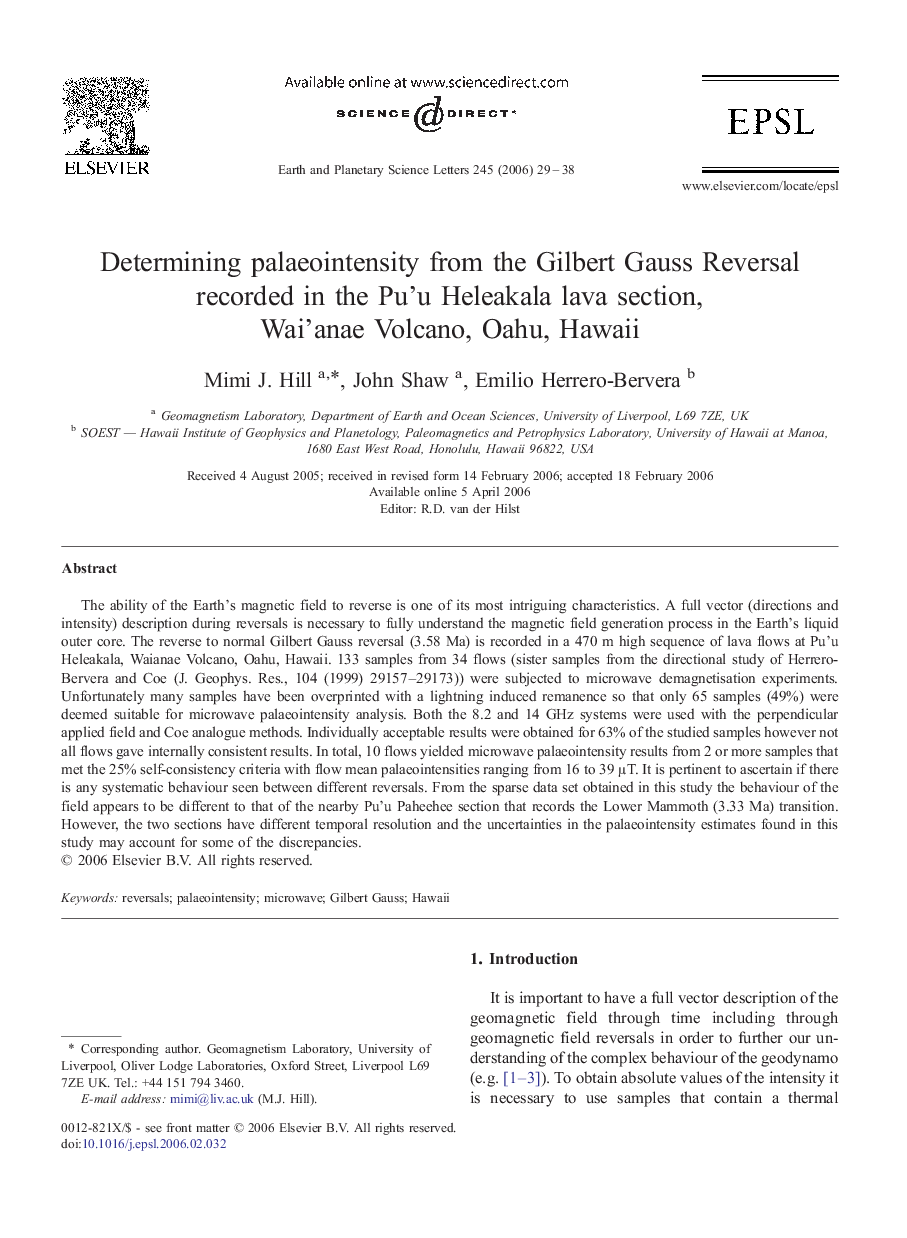| Article ID | Journal | Published Year | Pages | File Type |
|---|---|---|---|---|
| 4681093 | Earth and Planetary Science Letters | 2006 | 10 Pages |
The ability of the Earth's magnetic field to reverse is one of its most intriguing characteristics. A full vector (directions and intensity) description during reversals is necessary to fully understand the magnetic field generation process in the Earth's liquid outer core. The reverse to normal Gilbert Gauss reversal (3.58 Ma) is recorded in a 470 m high sequence of lava flows at Pu’u Heleakala, Waianae Volcano, Oahu, Hawaii. 133 samples from 34 flows (sister samples from the directional study of Herrero-Bervera and Coe (J. Geophys. Res., 104 (1999) 29157–29173)) were subjected to microwave demagnetisation experiments. Unfortunately many samples have been overprinted with a lightning induced remanence so that only 65 samples (49%) were deemed suitable for microwave palaeointensity analysis. Both the 8.2 and 14 GHz systems were used with the perpendicular applied field and Coe analogue methods. Individually acceptable results were obtained for 63% of the studied samples however not all flows gave internally consistent results. In total, 10 flows yielded microwave palaeointensity results from 2 or more samples that met the 25% self-consistency criteria with flow mean palaeointensities ranging from 16 to 39 μT. It is pertinent to ascertain if there is any systematic behaviour seen between different reversals. From the sparse data set obtained in this study the behaviour of the field appears to be different to that of the nearby Pu’u Paheehee section that records the Lower Mammoth (3.33 Ma) transition. However, the two sections have different temporal resolution and the uncertainties in the palaeointensity estimates found in this study may account for some of the discrepancies.
